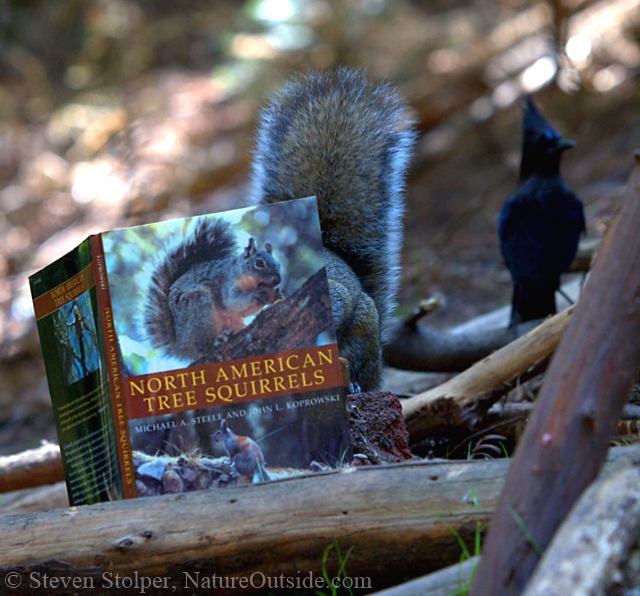
Photo by NatureOutside reader K. Leal
It is time, once again, for my annual book recommendations. Below are 10 bushcraft books I think you’ll enjoy. They touch upon different areas of bushcraft: outdoor skills, wild edibles, botany, crafts and skills, and animals and ecology.
If you don’t find your next “favorite book” in the list below, check out lists from previous years to find something you’ll like. Links to previous year’s book recommendations appear at the end of this article.
Remember, learning is fundamental to bushcraft. And no matter how much we learn, there is always more to understand. So enjoy the list, and feel free to revisit the older ones at the end of this article.
You can click on the book’s title or picture to see its product page on Amazon.
The following are affiliate links.
Bushcraft
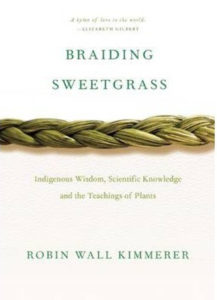 This is by far the best book I’ve read all year. Robin Wall Kimmerer ‘s riveting book combines ecology, science, and Native American philosophy with the author’s experience as a Native American woman scientist.
This is by far the best book I’ve read all year. Robin Wall Kimmerer ‘s riveting book combines ecology, science, and Native American philosophy with the author’s experience as a Native American woman scientist.
You will find “hard” bushcraft skills and hard science sprinkled throughout the book. But it’s the thoughtful mixture of science and indigenous ways of knowing that makes this book special. If you wonder about man’s place in nature, this is a well-written book you will enjoy.
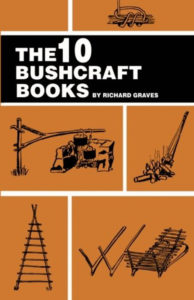 This is one of the more famous bushcraft texts that people refer to on Internet forums. Originally published in 1965, it is still in print. The books are:
This is one of the more famous bushcraft texts that people refer to on Internet forums. Originally published in 1965, it is still in print. The books are:
- Ropes and Cords
- Huts and Thatching
- Campcraft
- Food & Water
- Firemaking
- Knots & Lashings
- Tracks & Lures
- Snares & Traps
- Travel & Gear
- Time & Direcation
The book is a little dated (hand drawings instead of photographs), but the information is still sound. The book covers many topics, and is best used as an introduction to each. Along with Bushcraft and Wildwood Wisdom, this book should be a part of your library.
3. Shelters, Shacks, and Shanties
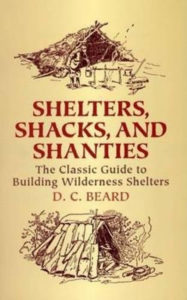 This is another text from yesteryear, originally published in 1914. It’s the only book I’ve found dedicated to wilderness shelters. The book is chock-full of shelter descriptions, starting with simple “balsam beds” and culminating with full-blown log houses. The book does not contain step-by-step directions. So, like all books of its ilk, you should use it as a gateway to learn the intricate skills it describes.
This is another text from yesteryear, originally published in 1914. It’s the only book I’ve found dedicated to wilderness shelters. The book is chock-full of shelter descriptions, starting with simple “balsam beds” and culminating with full-blown log houses. The book does not contain step-by-step directions. So, like all books of its ilk, you should use it as a gateway to learn the intricate skills it describes.
Wild Edibles and Botany
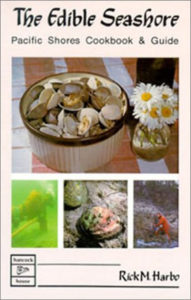 This compact, inexpensive book on seashore foraging is aimed primarily at the west coast of the United States. Its glossy pages hold species descriptions, full-color photographs, harvesting information, and recipes. If you live in the western United States, this book can introduce you to coastal foraging.
This compact, inexpensive book on seashore foraging is aimed primarily at the west coast of the United States. Its glossy pages hold species descriptions, full-color photographs, harvesting information, and recipes. If you live in the western United States, this book can introduce you to coastal foraging.
5. Acorn: Recipes for the Forgotten Food
 This small book is dedicated to the preparation of acorns as food. In a past list, I reviewed Native Harvests, a collection of Native American recipes. This book has some traditional recipes, but also has many that use acorn meal in western cooking. The book does have instructions for leaching. But they are different from how I leach acorns.
This small book is dedicated to the preparation of acorns as food. In a past list, I reviewed Native Harvests, a collection of Native American recipes. This book has some traditional recipes, but also has many that use acorn meal in western cooking. The book does have instructions for leaching. But they are different from how I leach acorns.
Crafts and Skills
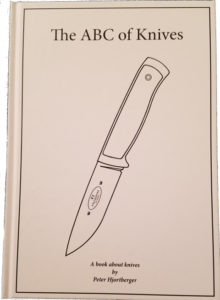 This introduction to modern knives is written by Peter Hjortberger, of Fallkniven Knives. The book is intended as an introduction to steels, grinds, sharpening, types of knives and knife anatomy. It defines many of the terms you see people using on the Internet. And as you can imagine, this thin book is full of color photographs of Fallkniven products.
This introduction to modern knives is written by Peter Hjortberger, of Fallkniven Knives. The book is intended as an introduction to steels, grinds, sharpening, types of knives and knife anatomy. It defines many of the terms you see people using on the Internet. And as you can imagine, this thin book is full of color photographs of Fallkniven products.
The author is not a native English speaker, so you will find some unusual word choices.
7. Make Your Own Knife Handles
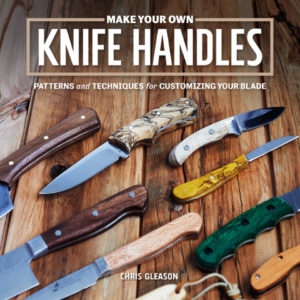 This coffee-table-quality book has step-by-step instructions for making custom handles for your knives. The book is organized into “projects.” Each project has instructions and gorgeous color photographs. The book has projects for four kitchen knives, five hunting knives, two folding knives, a hatchet, bottle-opener, and an Alaskan Ulu. Many of these projects seem to use knife blanks available from the Woodcraft chain of retail stores.
This coffee-table-quality book has step-by-step instructions for making custom handles for your knives. The book is organized into “projects.” Each project has instructions and gorgeous color photographs. The book has projects for four kitchen knives, five hunting knives, two folding knives, a hatchet, bottle-opener, and an Alaskan Ulu. Many of these projects seem to use knife blanks available from the Woodcraft chain of retail stores.
Animals and Ecology
8. Owls of the United States and Canada
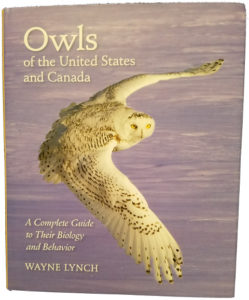 This stupendous, oversized book will be at home on your coffee table. But the book is much more than a collection of amazing photographs. It covers owl anatomy, nests and habitat, food, behavior, predators, and interaction with humans. It delves into each topic and provides great insight into these remarkable birds. If you want to learn more about owls, this is the book for you!
This stupendous, oversized book will be at home on your coffee table. But the book is much more than a collection of amazing photographs. It covers owl anatomy, nests and habitat, food, behavior, predators, and interaction with humans. It delves into each topic and provides great insight into these remarkable birds. If you want to learn more about owls, this is the book for you!
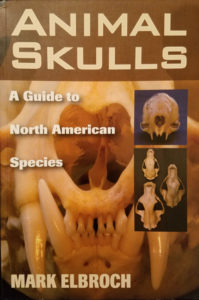 Mark Elbroch is the most respected author of animal tracking books in North America. And his book on skulls is a masterpiece. It leads readers through the bones of the skull, how the bones and muscles work, and what they can tell you about the way the animal lives. The remainder of the book is a terrific field guide you can use to identify any skull you find along the trail. However, this is not a book you can slip into your pocket. It’s the size of a small phone book (for the younger generation – that’s about 5 smart-phones thick).
Mark Elbroch is the most respected author of animal tracking books in North America. And his book on skulls is a masterpiece. It leads readers through the bones of the skull, how the bones and muscles work, and what they can tell you about the way the animal lives. The remainder of the book is a terrific field guide you can use to identify any skull you find along the trail. However, this is not a book you can slip into your pocket. It’s the size of a small phone book (for the younger generation – that’s about 5 smart-phones thick).
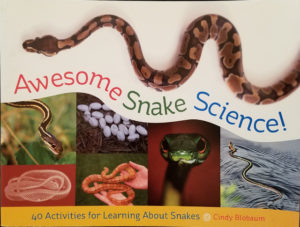 This book is filled with fun information about snakes. It’s aimed at children and filled with entertaining snake-related projects. As an adult, I enjoyed the accessible text and interesting drawings. And I found it a refreshing way to learn more about these charismatic animals.
This book is filled with fun information about snakes. It’s aimed at children and filled with entertaining snake-related projects. As an adult, I enjoyed the accessible text and interesting drawings. And I found it a refreshing way to learn more about these charismatic animals.
Other Guides on NatureOutside
2017
10 Books for Bushcrafters, Nature Lovers, and People Who Love the Outdoors (2017)
2016
10 Books for People Who Love the Outdoors (2016)
10 Equipment Gifts for Bushcrafters, Nature Lovers, and People Who Love the Outdoors (2016)
2015
10 Equipment Gifts for People Who Love the Outdoors (2015)
10 Books for People Who Love the Outdoors (2015)
2014
10 Equipment Gifts for Bushcrafters, Nature Lovers, and People Who Love the Outdoors (2014)
10 Books for Bushcrafters, Nature Lovers, and People Who Love the Outdoors (2014)
Top 10 Videos for Bushcrafters, Nature Lovers, and People Who Love the Outdoors (2014)
For fun facts and useful tips, join the free Bushcraft Newsletter.



Leave a Comment